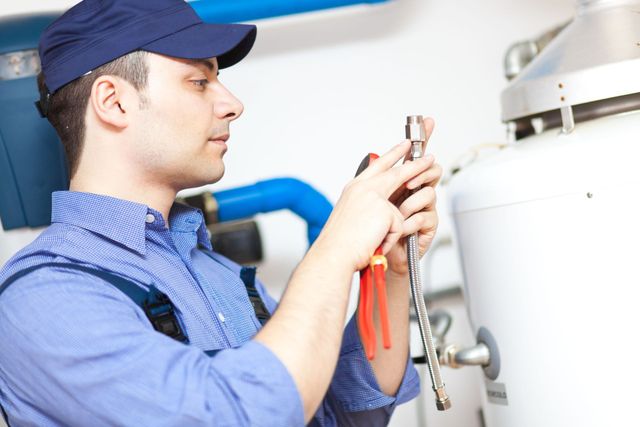The content underneath relating to Tips For Maintaining Your Hot Water Heater is fairly fascinating. You should check this stuff out.

Warm water is vital for daily convenience, whether it's for a revitalizing shower or washing dishes. To ensure your warm water system runs successfully and lasts longer, regular upkeep is crucial. This short article provides practical pointers and understandings on how to keep your home's hot water system to avoid interruptions and expensive repairs.
Intro
Maintaining your home's warm water system might appear challenging, yet with a couple of easy actions, you can ensure it runs smoothly for many years to come. This overview covers whatever from recognizing your hot water system to do it yourself maintenance ideas and knowing when to employ professional aid.
Significance of Preserving Your Warm Water System
Routine upkeep not just prolongs the life-span of your hot water system yet also ensures it runs efficiently. Ignoring upkeep can result in lowered efficiency, higher power costs, and even premature failing of the system.
Signs Your Warm Water System Demands Maintenance
Understanding when your warm water system requires attention can avoid significant issues. Watch out for indicators such as irregular water temperature, unusual noises from the heating system, or rusty water.
Recognizing Your Warm Water System
Prior to diving right into upkeep jobs, it's helpful to recognize the standard parts of your warm water system. Normally, this consists of the water heater itself, pipes, anode rods, and temperature level controls.
Regular Monthly Upkeep Tasks
Routine month-to-month checks can help catch minor concerns before they rise.
Purging the Hot Water Heater
Purging your water heater eliminates sediment accumulation, boosting performance and prolonging its life.
Checking and Replacing Anode Rods
Anode rods protect against corrosion inside the tank. Examining and changing them when worn is critical.
Evaluating and Adjusting Temperature Level Setups
Changing the temperature level setups makes sure optimum efficiency and security.
Do It Yourself Tips for Upkeep
You can execute several upkeep jobs yourself to keep your hot water system in top condition.
Checking for Leaks
Routinely inspect pipes and links for leaks, as these can lead to water damages and greater expenses.
Testing Pressure Alleviation Valves
Checking the stress safety valve ensures it functions appropriately and protects against extreme pressure buildup.
Insulating Pipelines
Shielding hot water pipes lowers warmth loss and can save energy.
When to Call a Professional
While do it yourself upkeep is useful, some issues need professional proficiency.
Complicated Problems Needing Professional Aid
Examples include significant leakages, electric problems, or if your water heater is consistently underperforming.
Regular Expert Maintenance Conveniences
Expert maintenance can consist of extensive evaluations, tune-ups, and ensuring conformity with safety and security standards.
Final thought
Regular upkeep of your home's warm water system is necessary for efficiency, long life, and expense financial savings. By complying with these tips and understanding when to seek expert help, you can make sure a dependable supply of hot water without unanticipated interruptions.
How to Maintain an Instant Hot Water Heater
Before tinkering with your hot water heater, make sure that it’s not powered on. You also have to turn off the main circuit breaker and shut off the main gas line to prevent accidents. Also turn off the water valves connected to your unit to prevent water from flowing into and out of the appliance. 2. When you’re done, you have to detach the purge valves’ caps. These look like the letter “T†and are situated on either side of the water valves. Doing so will release any pressure that has accumulated inside the valves while at the same time avoid hot water from shooting out and burning your skin. 3. When the purge valves’ caps are removed, you have to connect your hosing lines to the valves. Your unit should have come with three hoses but if it didn’t, you can purchase these things from any hardware or home repair shops. You can also get them from retail stores that sell water heating systems. Read the user’s manual and follow it to complete this task properly. When the hosing lines are connected, open the purge port’s valves. 4. You should never use harsh chemical cleaners or solutions when cleaning your unit. Make use of white vinegar instead. It should be undiluted and you’ll probably use about 2 gallons. 5. Now flush your water heater. This task should probably take about 40 minutes. We can’t give you specific directions for this because the procedure is carried out depending on the type, model and brand of your heater. With that being said, refer to the user’s manual. 6. When you’re done draining the unit, you have to turn off the purge port valves again. Remove the hosing lines that you earlier installed on each of the water valves. Put the valve caps (purge port) back in their respective places and be very careful so as not to damage the rubber discs that are found inside these caps. 7. Now that everything’s back in place, check your user’s manual again to find out how to reactivate your water heating system. 8. Once it is working, turn one of your hot water faucets on just to let air pass through the heater’s water supply pipes. Leave the tap on until water flows smoothly out of it. https://www.orrplumbing.com/blog/2014/september/how-to-maintain-an-instant-hot-water-heater/

As an enthusiastic reader about Tips For Maintaining Your Hot Water Heater, I thought sharing that piece was a good idea. You should pause to distribute this entry if you enjoyed it. Many thanks for going through it.
Call Today